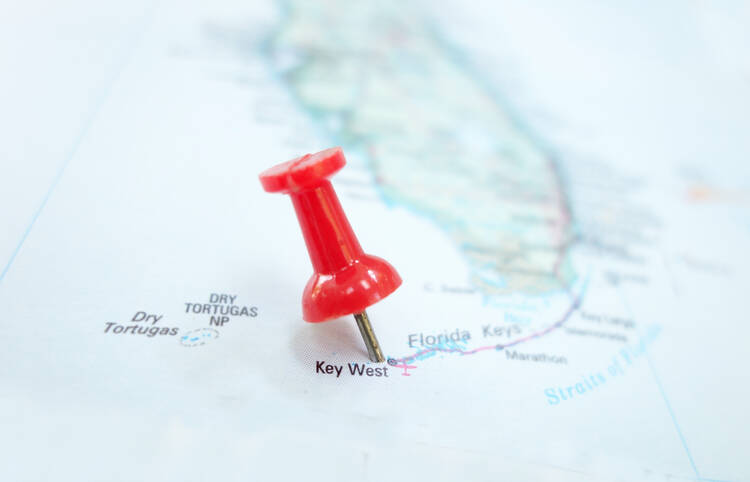What came ashore on Sept. 23 wasn’t the sort of high-end yacht that usually docks in affluent Key Biscayne. It looked instead like a floating dumpster, and it was carrying nine Cubans who had fled their communist island. But these days that’s not such an odd sight for communities like Key Biscayne, which sits across Biscayne Bay from Miami. This year in fact has seen a remarkable spike in the number of Cubans arriving in South Florida on crude rafts.
And it’s brought back painful memories for Ivan Camejo.
That’s because 2014 marks the 20th anniversary of Cuba’s most massive exodus of rafters. In 1994, after then President Fidel Castro said Cuban authorities would do nothing to prevent Cubans from leaving if they wanted to, 35,000 attempted the treacherous passage to the United States. Camejo was one of them.
He almost didn’t survive the journey. “For four days,” he says, “all I did was paddle and pray, pray and paddle.” He and his raft companions faced storms that almost threw them into the Florida Straits. On the last day, they came upon the floating corpses of rafters who had met that fate.
“Many were half-eaten by sharks,” Camejo recalls. Hours later his raft was picked up by the U.S. Coast Guard. He eventually made it to a new life in Miami.
So far this year, the Coast Guard has intercepted more than 3,000 rafters, known as balseros. That’s double the number this time last year.
“It takes me back,” says Camejo, who runs the Cuban Rafters Foundation, which helps newly arrived balseros secure homes, jobs and passable English. “And it makes me realize how little things have changed in Cuba.”
In many respects he’s right. Things really haven’t improved all that much for Cubans since 1994—when the loss of the Soviet Union’s largesse sent the island’s economy into free fall. For many life has gotten worse.
But the new balsero boom is also a reminder of how little things have changed regarding Cuban policy in the United States, where politicians refuse to loosen a failed, 52-year-old trade embargo in ways that might help more Cubans become self-sufficient.
Either way, the U.S. communities that feel the brunt of those Cuban and U.S. policy shortcomings can be found in South Florida. Aid workers like Juan López, associate Cuban and Haitian resettlement director for the U.S. Conference of Catholic Bishops in Miami, are working overtime. López has been taken aback by the sudden rise “in the number of Cubans feeling the kind of desperation that drives a dangerous raft journey.”
The economic reforms that the Cuban leader Raúl Castro decreed in recent years were supposed to put more cash in Cubans’ pockets. But the balseros who show up at Lopez’s agency say it’s hardly turned out that way for most Cubans—in large part because Castro, ever nervous about ceding too much control, hasn’t taken the reforms far enough.
Still, while those dashed expectations might explain the rise in departures from Cuba, they don’t entirely explain the burgeoning number of departures by raft. In fact, the balsero count should be down this year, if only because last year Castro began allowing Cubans to travel abroad freely for the first time in half a century—on commercial flights instead of flimsy boats.
One likely explanation for the persistence of the floating exodus lies in something else many, if not most balseros tell people like López: This latest generation of balseros has no family in the United States, which means they have little or no access to the billions of dollars in remittances Cuban-Americans send to relatives in Cuba each year. That’s money that can start a small, income-generating business—or buy a plane ticket.
“So the rafter’s goal,” says Lopez, “is to become the person who sets a family’s anchor in the United States.” That’s easier for Cubans than any other migrant group, thanks to the controversial “wet foot, dry foot” rule that gives Cubans automatic residency if they make it onto dry land here.
But some policy flexibility in Washington would help. Were the embargo opened just enough to let American investors and nonprofits channel resources to private Cuban entrepreneurs—especially those with no U.S. family ties—it could ease the destitution that launches rafts. But little change is imminent on either side of the Florida Straits. The waters in between can probably expect more rafts.








